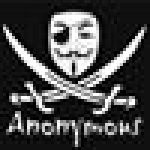Not a member of Pastebin yet?
Sign Up,
it unlocks many cool features!
- When you first turn on you computer (BEFORE DIALING INTO YOUR ISP),
- open a MS-DOS Prompt window (start/programs MS-DOS Prompt).
- Then type netstat -arn and press the Enter key.
- Your screen should display the following (without the dotted lines
- which I added for clarification).
- -----------------------------------------------------------------------------
- Active Routes:
- Network Address Netmask Gateway Address Interface Metric
- 127.0.0.0 255.0.0.0 127.0.0.1 127.0.0.1 1
- 255.255.255.255 255.255.255.255 255.255.255.255 0.0.0.0 1
- Route Table
- Active Connections
- Proto Local Address Foreign Address State
- --------------------------------------------------------------------------------
- If you see anything else, there might be a problem (more on that later).
- Now dial into your ISP, once you are connected;
- go back to the MS-DOS Prompt and run the same command as before
- netstat -arn, this time it will look similar to the following (without
- dotted lines).
- -------------------------------------------------------------------------------------
- Active Routes:
- Network Address Netmask Gateway Address Interface Metric
- 0.0.0.0 0.0.0.0 216.1.104.70 216.1.104.70 1
- 127.0.0.0 255.0.0.0 127.0.0.1 127.0.0.1 1
- 216.1.104.0 255.255.255.0 216.1.104.70 216.1.104.70 1
- 216.1.104.70 255.255.255.255 127.0.0.1 127.0.0.1 1
- 216.1.104.255 255.255.255.255 216.1.104.70 216.1.104.70 1
- 224.0.0.0 224.0.0.0 216.1.104.70 216.1.104.70 1
- 255.255.255.255 255.255.255.255 216.1.104.70 216.1.104.70 1
- Route Table
- Active Connections
- Proto Local Address Foreign Address State
- TCP 0.0.0.0:0 0.0.0.0:0 LISTENING
- TCP 216.1.104.70:137 0.0.0.0:0 LISTENING
- TCP 216.1.104.70:138 0.0.0.0:0 LISTENING
- TCP 216.1.104.70:139 0.0.0.0:0 LISTENING
- UDP 216.1.104.70:137 *:*
- --------------------------------------------------------------------------------
- What you are seeing in the first section (Active Routes) under the heading of
- Network Address are some additional lines. The only ones that should be there
- are ones belonging to your ISP (more on that later). In the second section
- (Route Table) under Local Address you are seeing the IP address that your ISP
- assigned you (in this example 216.1.104.70).
- The numbers are divided into four dot notations, the first three should be
- the same for both sets, while in this case the .70 is the unique number
- assigned for THIS session. Next time you dial in that number will more than
- likely be different.
- To make sure that the first three notation are as they should be, we will run
- one more command from the MS-DOS window.
- From the MS-DOS Prompt type tracert /www.yourispwebsite.com or .net
- or whatever it ends in. Following is an example of the output you should see.
- ---------------------------------------------------------------------------------------
- Tracing route to /www.motion.net [207.239.117.112]over a maximum of 30 hops:
- 1 128 ms 2084 ms 102 ms chat-port.motion.net [216.1.104.4]
- 2 115 ms 188 ms 117 ms chat-core.motion.net [216.1.104.1]
- 3 108 ms 116 ms 119 ms www.motion.net [207.239.117.112]
- Trace complete.
- ------------------------------------------------------------------------------------------
- You will see that on lines with the 1 and 2 the first three notations of the
- address match with what we saw above, which is a good thing. If it does not,
- then some further investigation is needed.
- If everything matches like above, you can almost breath easier. Another thing
- which should you should check is programs launched during startup. To find
- these, Click start/programs/startup, look at what shows up. You should be
- able to recognize everything there, if not, once again more investigation is
- needed.
- -------------------------------------------------------------------------------------------
- Now just because everything reported out like we expected (and demonstrated
- above) we still are not out of the woods. How is this so, you ask? Do you use
- Netmeeting? Do you get on IRC (Internet Relay Chat)? Or any other program
- that makes use of the Internet. Have you every recieved an email with an
- attachment that ended in .exe? The list goes on and on, basically anything
- that you run could have become infected with a trojan. What this means, is
- the program appears to do what you expect, but also does just a little more.
- This little more could be blasting ebay.com or one of the other sites that
- CNNlive was talking about.
- What can you do? Well some anti-virus software will detect some trojans.
- Another (tedious) thing is to start each of these "extra" Internet programs
- one at a time and go through the last two steps above, looking at the routes
- and connection the program uses. However, the tricky part will be figuring
- out where to tracert to in order to find out if the addresses you see in
- step 2 are "safe" or not. I should forewarn you, that running tracert after
- tracert, after tracert might be considered "improper" by your ISP. The steps
- outlined above may not work exactly as I have stated depending upon your ISP,
- but with a true ISP it should work. Finally, this advise comes with NO
- warranty and by following my "hints' you implicitly release me from ANY and
- ALL liability which you may incur.
- Other options
- Display protocol statistics and current TCP/IP network connections.
- Netstat [-a] [-e] [-n] [-s] [-p proto] [-r] [intervals]
- -a.. Display all connections and listening ports.
- -e.. Display Ethernet statistics. This may be combined with the -s option.
- -n.. Diplays address and port numbers in the numerical form.
- -p proto..Shows connections for the protocol specified by proto; proto may be
- TCP or UDP. If used with the -s option to display per-protocol statistics,
- proto may be TCP, UDP, of IP.
- -r.. Display the routing table.
- -s.. Display per-protocol statistics. By default, statistics are shown for TCP
- UDP and IP; the -p option may be used to specify a subset of the default
- interval..Redisplay selected statistics, pausing intervals seconds between each
- display. If omitted. netstat will print the current configuration information
- once
Add Comment
Please, Sign In to add comment

